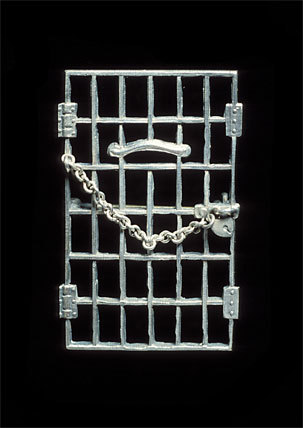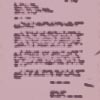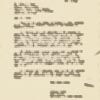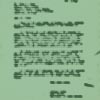Jailed for Freedom Pin
Annotation
More than 150 women were sentenced to prison as a result of their picketing the White House. The charge of obstructing the sidewalk led to sentences from two to six months at the Occoquan Workhouse. The women demanded to be treated as political prisoners, objecting to poor conditions. With a few of their members placed in solitary confinement, some of the women embarked upon a hunger strike, which resulted in them being force fed by prison officials. The National Women's Party recognized the travail and heroism of the prisoners. In December, 1917, at a meeting in their honor, the pickets who had been jailed were presented with small silver pins in the shape of prison doors with heart-shaped locks. The women wore their pins to commemorate their imprisonment and call attention to the injustice of being "jailed for freedom." In 1918 President Wilson pledged to support female suffrage. Many of the women went on to conduct protests around the country until the Nineteenth Amendment was passed.

Source
"Jailed for Freedom Pin," National Museum of American History.








